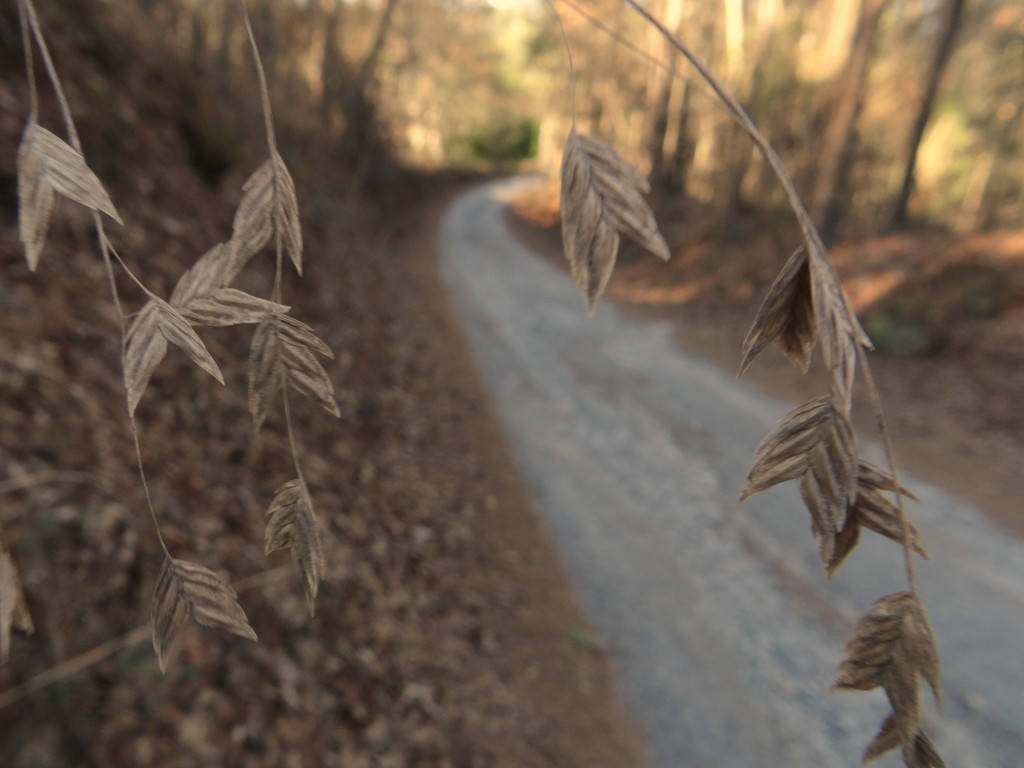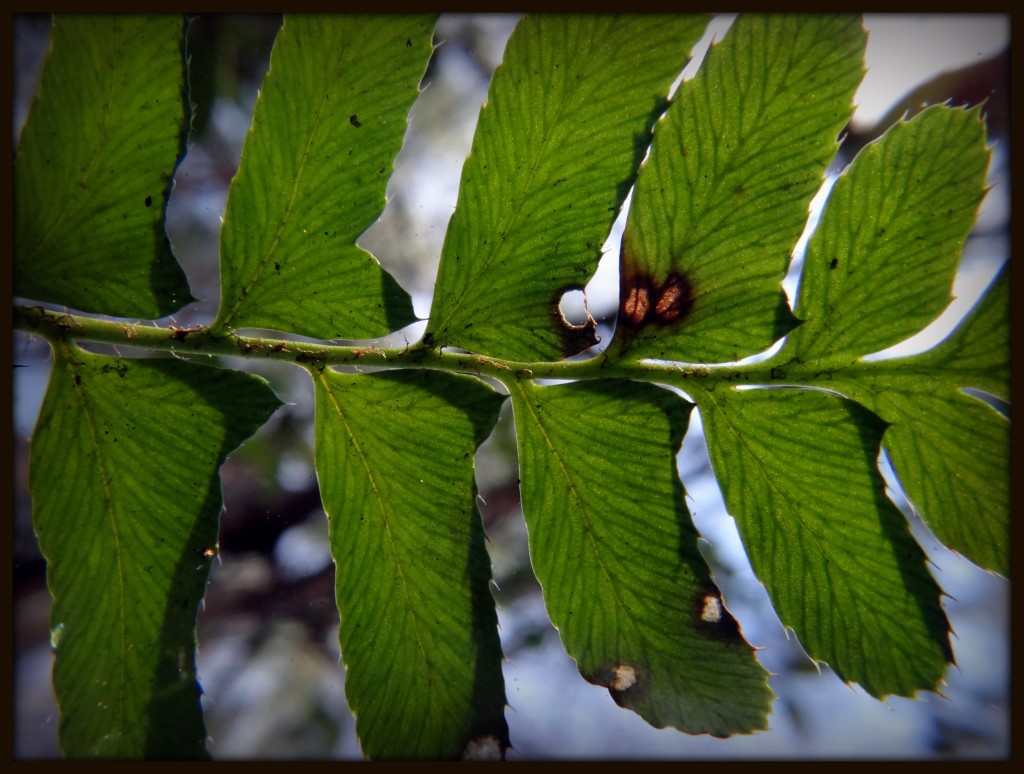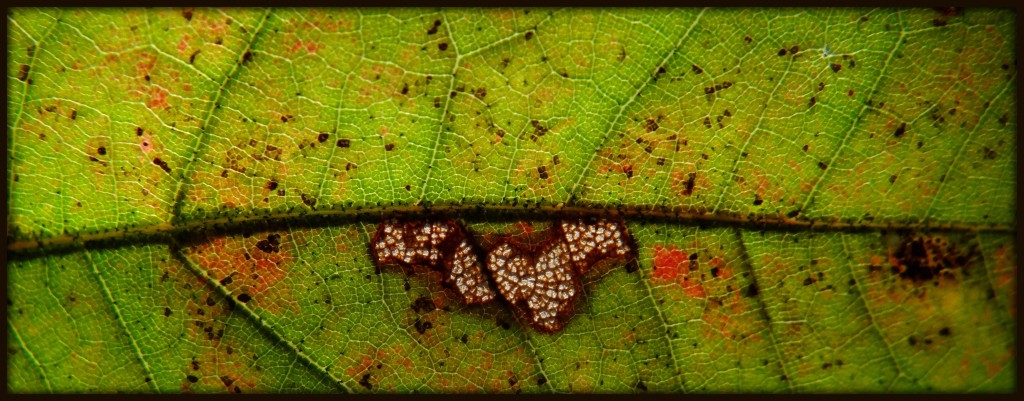I have wandered by this wild winter grass — still clutching much of its seed — for sixteen days now, and I have even photographed it on several occasions. Today, I finally add it to the Piney Woods Church Project image collection. While I had long appreciated its beautiful seed heads in the late afternoon light, I had never stopped to wonder what it is called, and whether it is invasive or wild. After some online research, I discovered that it is called wood oats, along with a host of other common names, such as Indian wild oats, Northern sea oats, and river oats. To avoid confusion, I suppose I ought to call it by its scientific name of Chasmanthium latifolium instead, but this translates into the rather non-poetic “gaping flower fat leaf.” The grass is native to damp wooded places in the southeastern United States. It reseeds itself quite readily, and manages to grow practically anywhere, including along this roadside in Chattahoochee Hills, Georgia.



